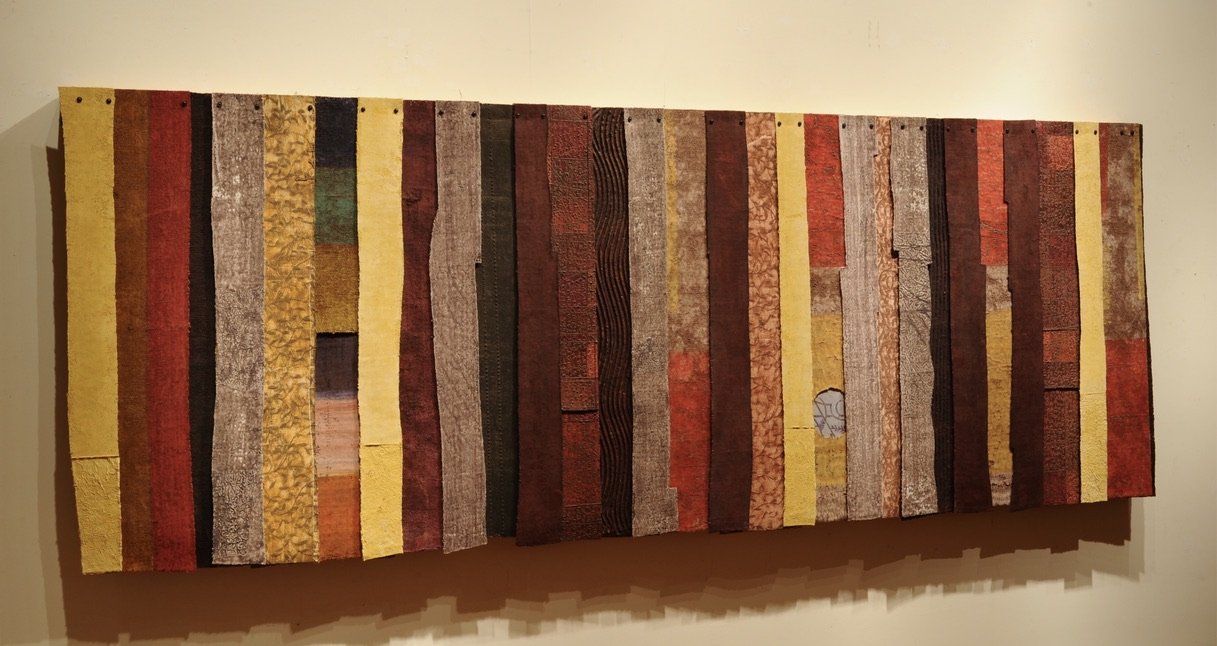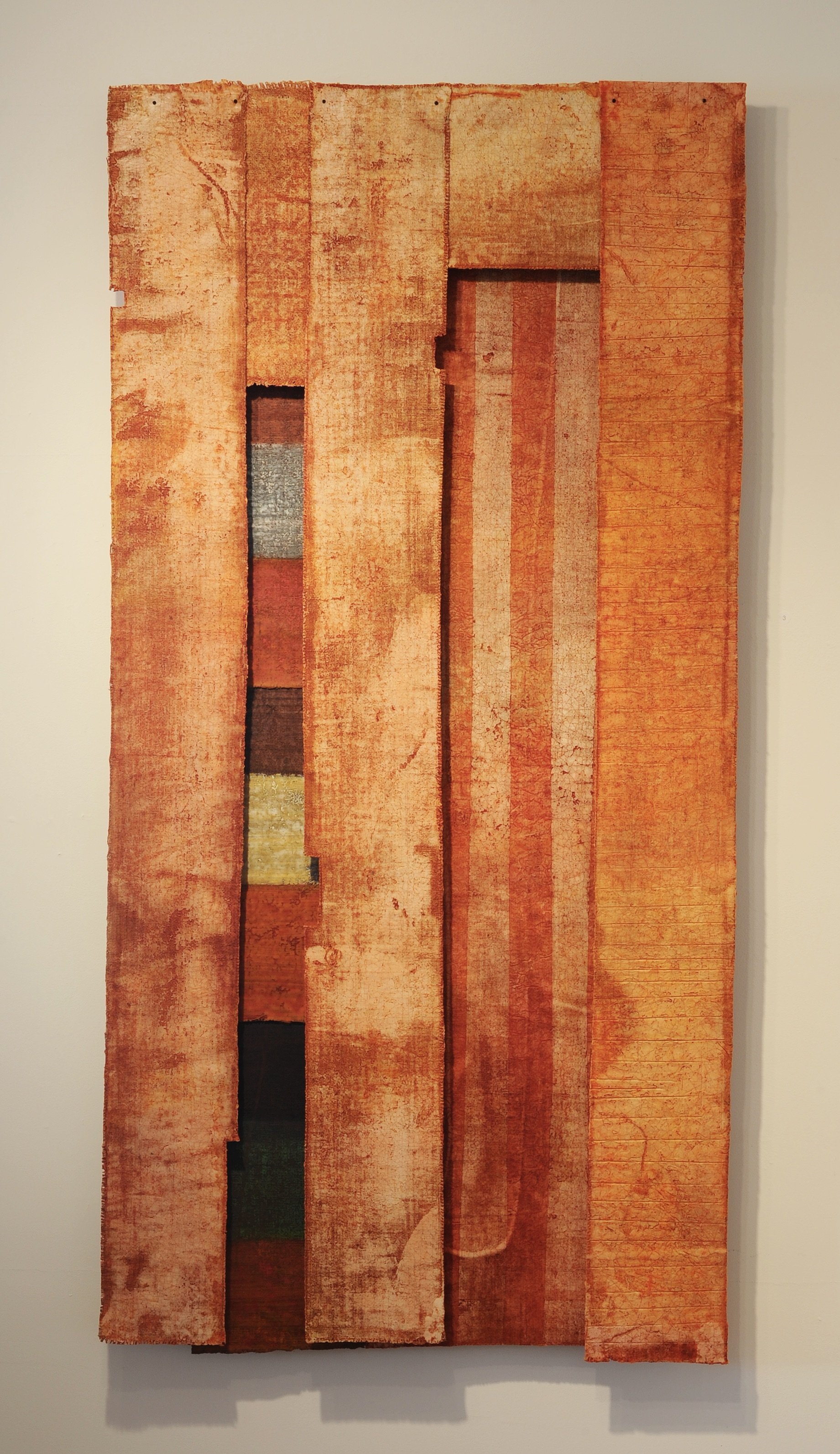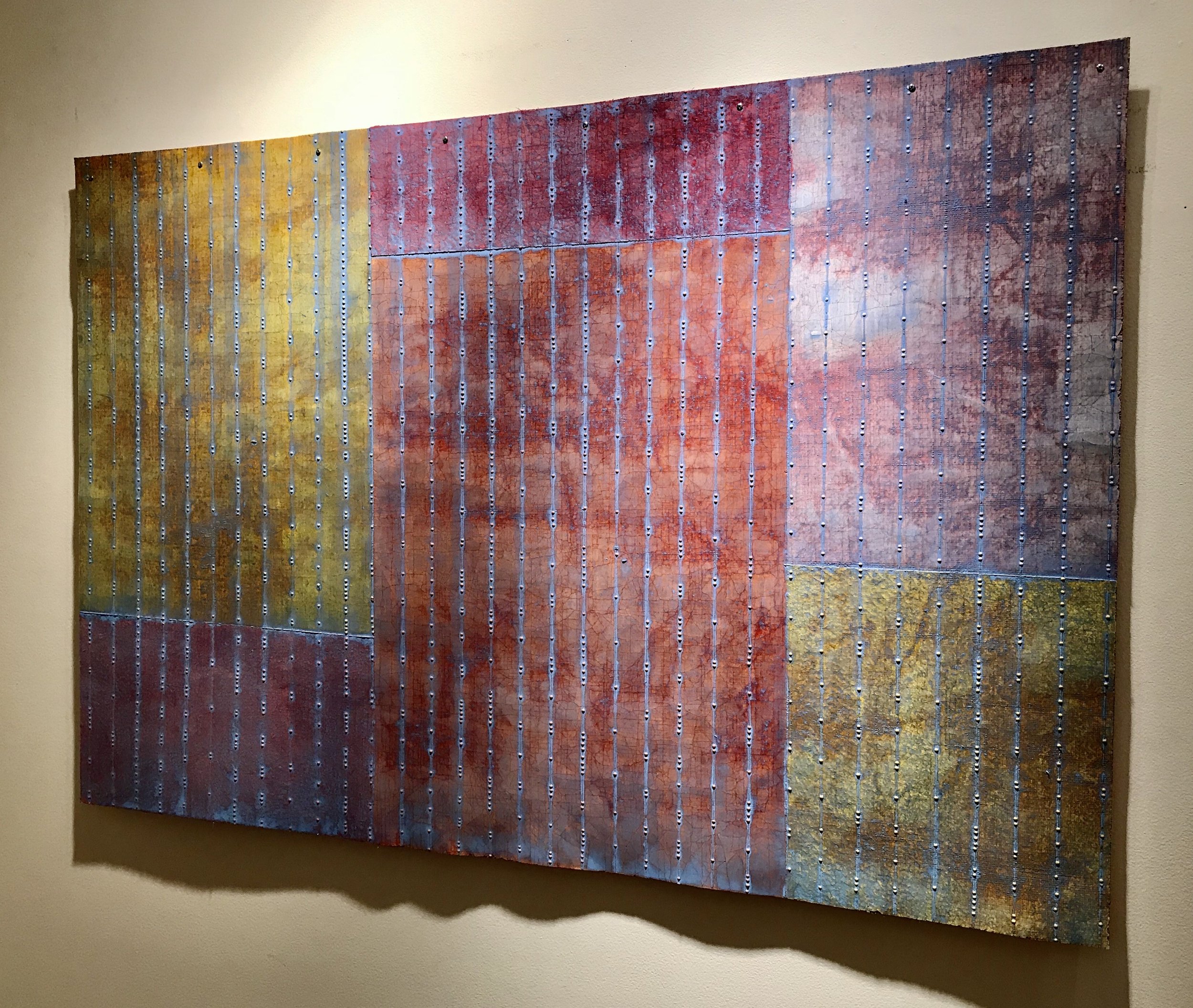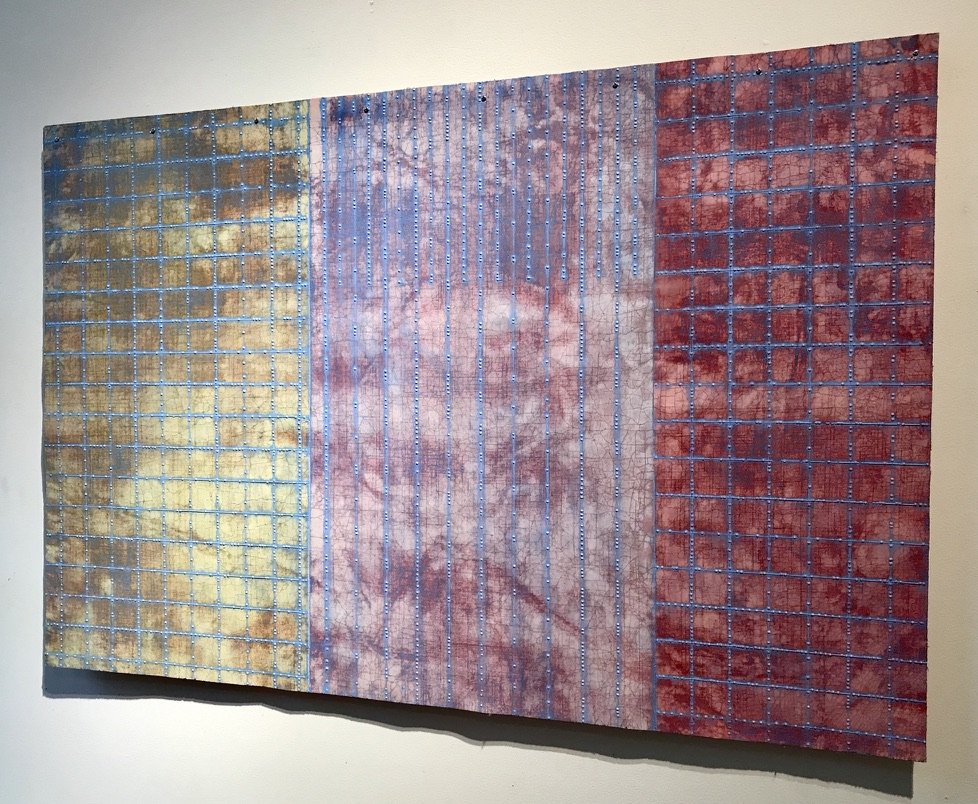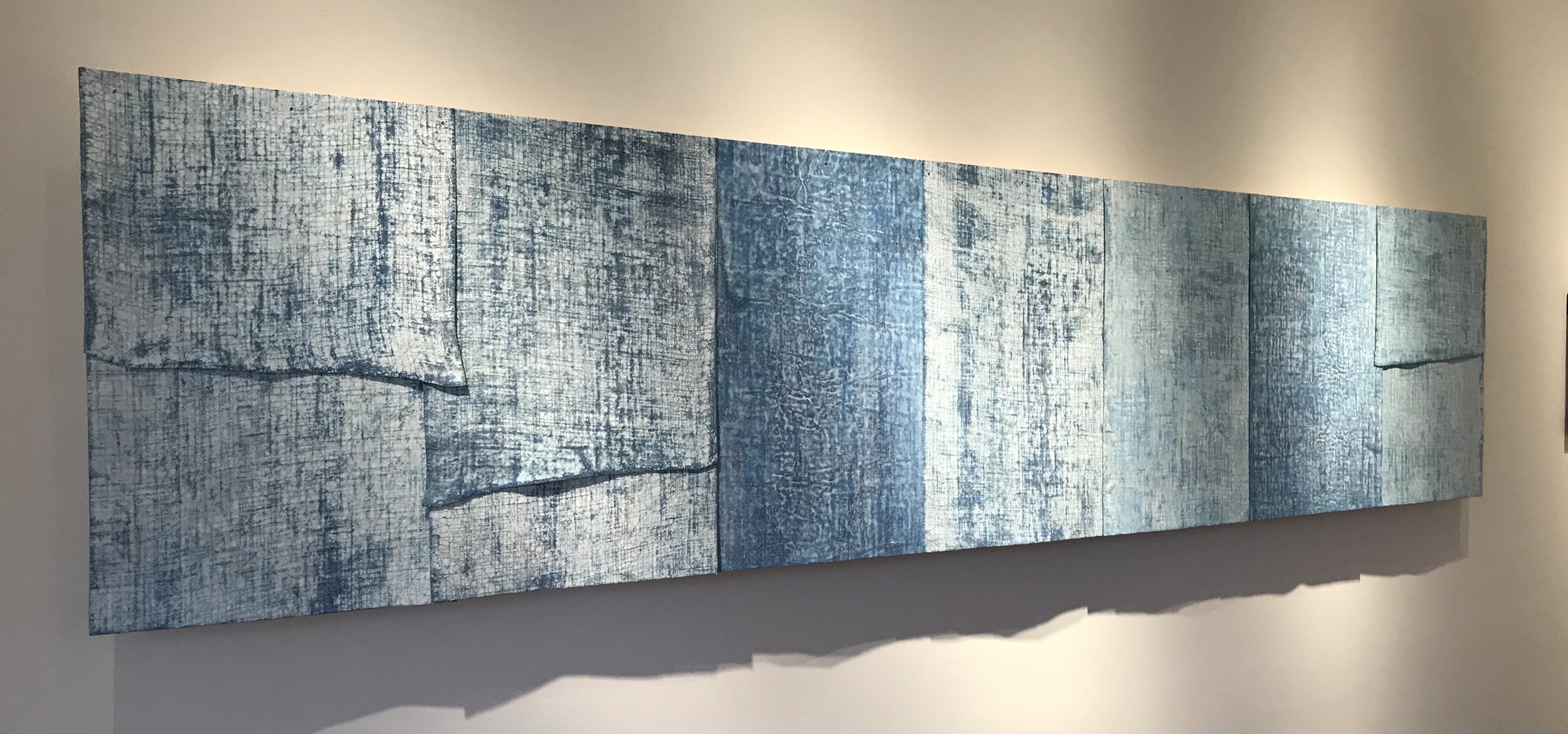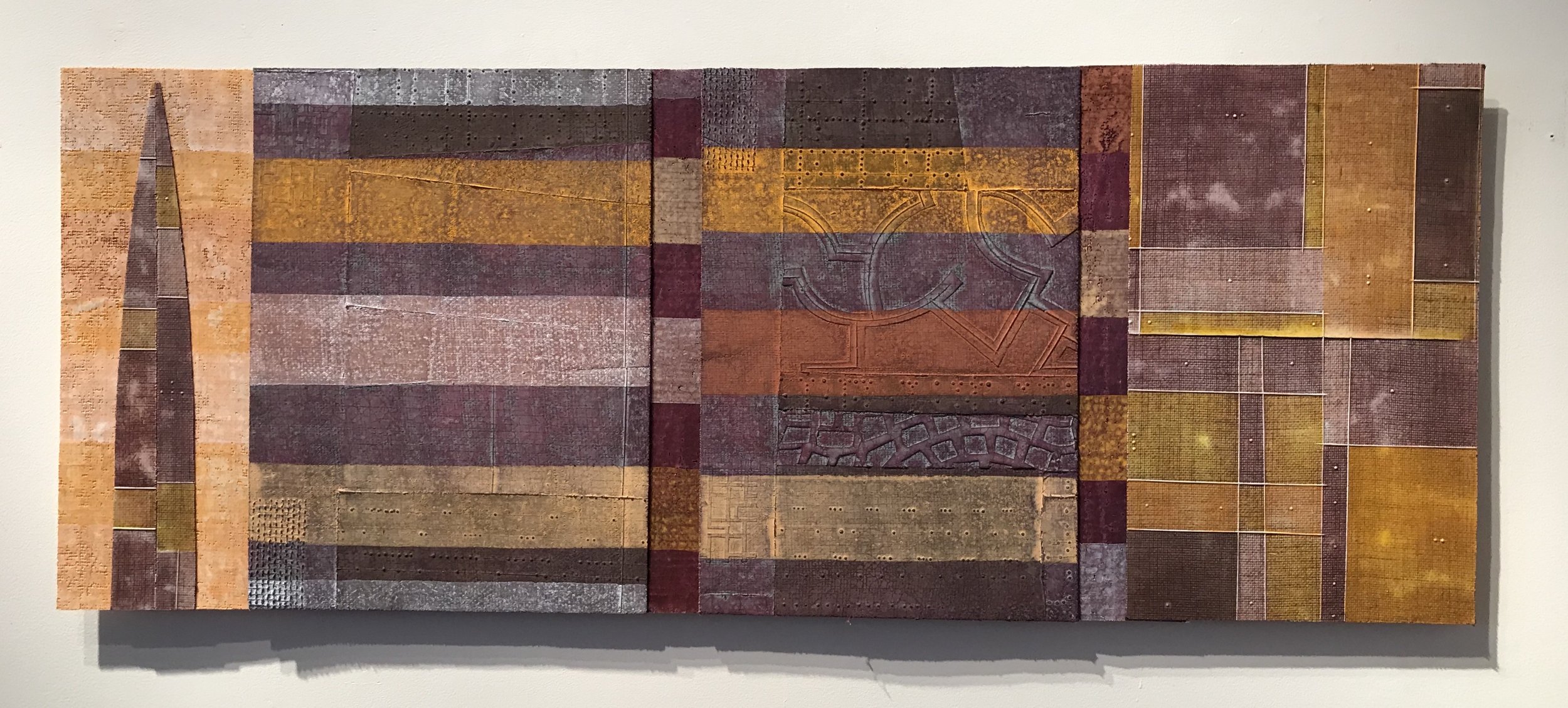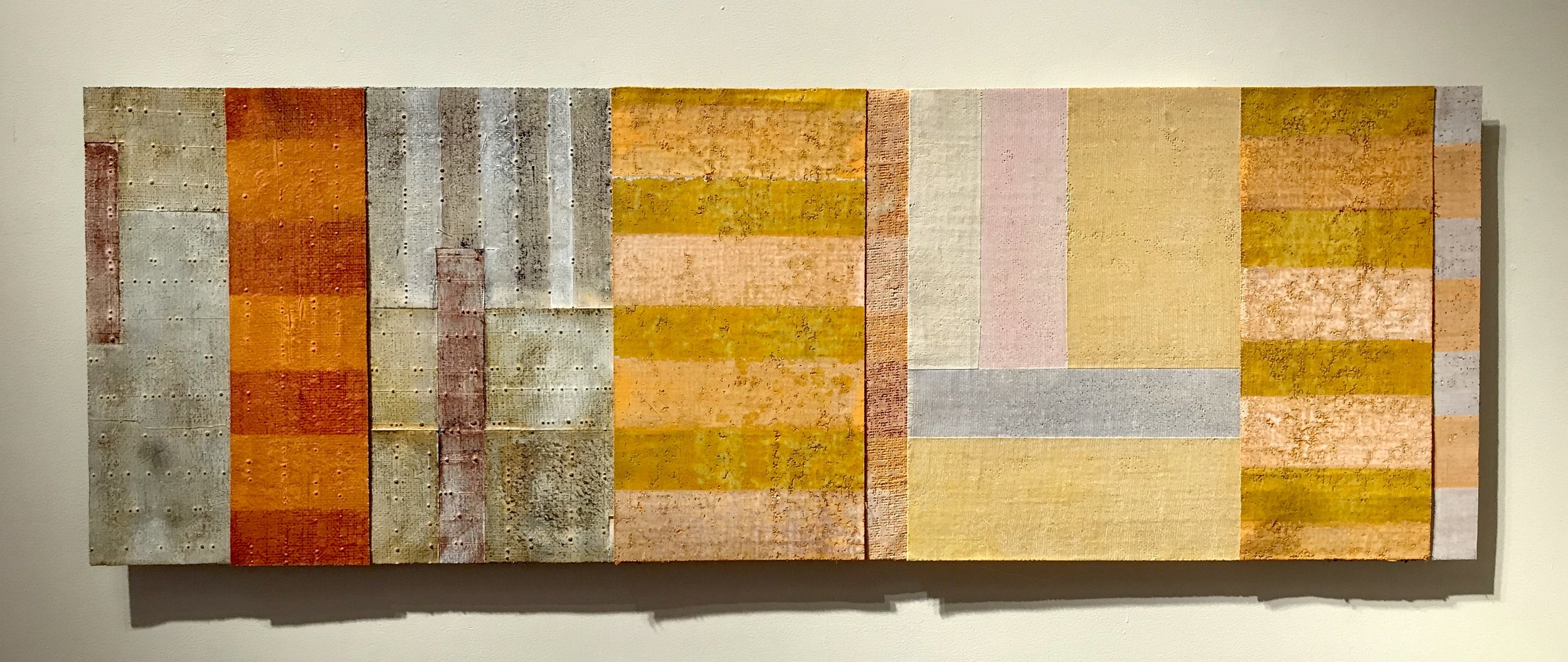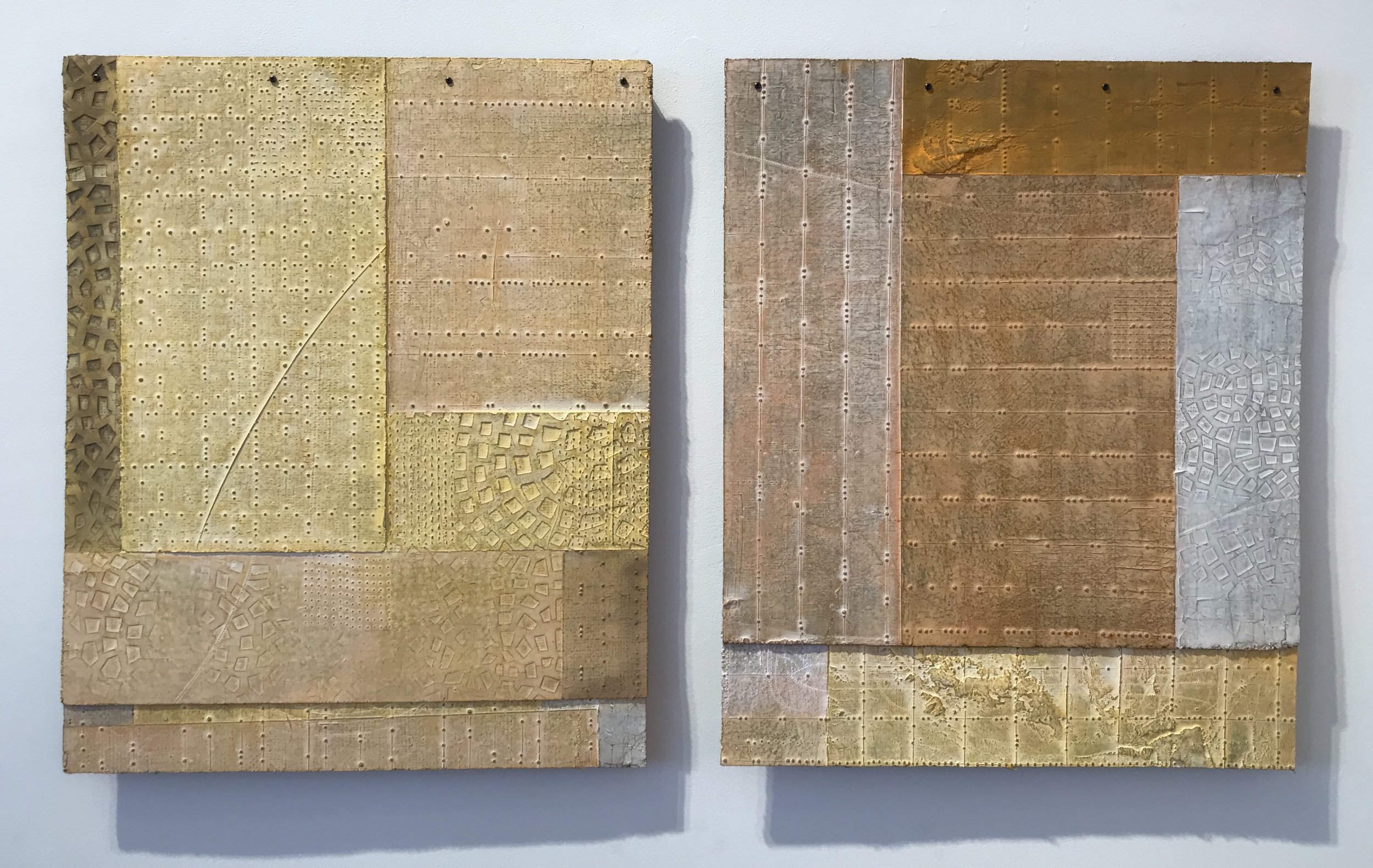George Mason
George Mason has a background in ceramic architectural tile and his work is steeped in the exploration of materials and history. Richly textured and saturated with color, the largest of his “relief tapestries” are pieced together panels that occupy entire walls. Mason began to combine encaustics with layered paper cut outs while teaching in Jerusalem, Indonesia, and India. Eventually, these works led to a multi faceted question that challenged the artist to synthesize several divergent interests. He asked, “Is it possible to create large dimensional works, outside the frame, highly textural, referencing textile, ceramic, and cut out traditions, that hang with authority yet surrender to gravity with grace? He is currently finding out, and living on the coast of Maine with his family. A recipient of 3 National Endowment for the Arts awards, and a founder of Watershed Center for Ceramic Arts, Mason has taught at Cranbrook Academy of Art, the College of Ceramics at Alfred University, Ohio State, U.C. Boulder, and Haystack.
In his home state of Maine, he has shown at The Portland Museum of Art, The Center for Maine Contemporary Art; with solo shows at The Farnsworth Museum, and the Bowdoin College Museum of Art. Mason has completed 30 plus Percent For Art architectural ceramic projects for schools in Maine and New York City between 1986 and 2003, including a commission for The Federal Reserve Bank in Atlanta, Georgia.
Artist Statement
Cultural and racial conditioning are embedded in my visual art, unspoken yet active. The ‘conditioned work’ that I can’t help but make, infers what is hidden by what I present and consequently what I omit.
In my inquiry, I have sought to honor what is ineffable and cannot be captured with words. Certainly, not all that is unspoken is ashamed of the light; it simply lives beyond the reach of language. But I do note that what remains out of sight can remain out of mind, and that has very real consequences.
—————-
These works rely on color, texture and gravity. No explanation necessary. Red does not reference meaning; red is meaning.
Making is prayer. Naming this activity as Art does not fully capture the affection or resiprosity. To participate is the blessing.
This process can never be approached directly. A fragrance can’t be willfully sought. A scent is fugitive and we are not able to coerce its arrival. With a spacious attentiveness we are rewarded with an encounter, or not. Just as with the northern lights that appear when least expected, all we can do is include the night sky in our ongoing rhythm of attention.
An encounter is not dependant on memory, and its recollection is not related in any consequential way to the original experience. Memory recapitulates a very different story, in which there is the sensation of owning a mental artifact, made safe, predictable, and manageable. This is a crafted narrative, living as memory; a possession that can be rendered again and again or fondled at will.
There is an irony in a makers ambition to coax into being a convincing visual affect that appears ‘unemcumbered’ by signs of artistic deliberation, given that the process is so highly manipulative.
Some of us yearn for the ‘long moment’, when suspension of thought allows color, texture, and gravity to simply radiate as presence. A makers prayers might be to facilitate such an encounter where both artist and audience are ambushed by something wondrous, in a clearing outside of time. This meeting would be unanticipated, and un-namable, and free of reference.

